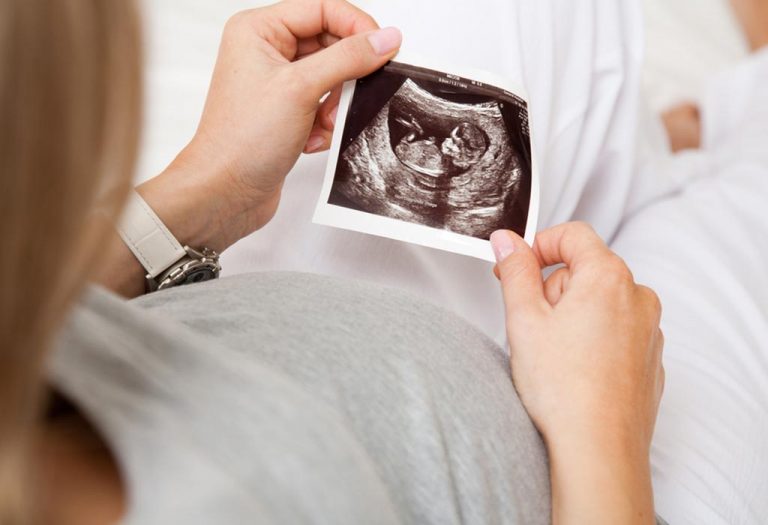Vaginal (Internal) Examination During Pregnancy

- What is Internal Examination During Pregnancy?
- Reasons for Internal Examination During Pregnancy
- How Frequently will You be Examined?
- When Should You Request an Examination?
- Should You Say ‘Yes’ to a Vaginal Examination?
- How to Minimise Your Discomfort for Vaginal Examination?
- The Procedure of an Internal Check-Up During Pregnancy
- If Your Water Breaks (Amniotomy)
- Are There Any Alternatives if You Don’t Want Vaginal Examination?
- Internal Examination After Birth
- FAQs
If you are a first-time mommy-to-be, you may get worried about your first internal check-up. You may also wonder how many times you may have to undergo this uncomfortable internal examination during pregnancy. The answer is not often, internal examination in pregnancy is a routine procedure conducted by doctors to monitor maternal and fetal health (2). These checks are like pit stops to ensure everything goes smoothly for you and your little one. In this article, we will break down what these checks are about, why they’re done, what happens during them, and all the stuff you need to know to feel confident about them.
What is Internal Examination During Pregnancy?
You may wonder why you need to undergo a vaginal examination during pregnancy. Internal check-ups are performed to track how you have moved ahead with your pregnancy. Your midwife usually conducts this examination, and she does it by inserting her fingers in your cervix to check how your labour is progressing. While some women may feel extreme discomfort and pain during the entire procedure, others may not find it too challenging to deal with. How relaxed you are during the procedure and your midwife’s technique may make all the difference in the pain and discomfort. However, internal check-ups do not harm your baby in any way. Also, if you experience extreme discomfort, you may talk to your doctor about it.
Reasons for Internal Examination During Pregnancy
Here are some of the reasons for conducting an internal examination during pregnancy:
- An internal check-up in the ninth month of pregnancy can be done to check the position of your cervix. As your labour progresses (7), your cervix will move forward from its position, and your doctor will have easy access to it.
- To track how much your cervix has opened up. Initially, the size is 1 cm and goes up to 10 cm. When your cervix is 10 cm or more, it is the time to push your baby out.
- To check your baby’s position and if the water bag needs to be ruptured.
- To check the position of your baby’s head and whether it is engaged.
- To establish how your baby’s head is sitting on your cervix.
Apart from when you are in labour, your doctor may also recommend an internal vaginal examination under the following situations:
1. To Check for Infections
Changing hormones can make a pregnant woman more susceptible to various vaginal infections, such as thrush or Gardnerella. Also, if you have a history of any sexually transmitted disease, your doctor may advise you to go for an internal examination.
2. To Conduct a Pap Smear Test
Usually, a pap smear test is recommended every two years (6). However, if you are due for the test during your pregnancy, you may discuss it with your doctor. Your doctor may advise you to postpone the test until six to eight weeks pregnant. However, if it is not urgent, your doctor may ask you to postpone till you deliver your baby.
3. To Check for Bleeding
Sometimes, you may experience bleeding during pregnancy. Bleeding during pregnancy is a cause for concern. Your doctor may recommend a vaginal examination to check the cause of the bleeding. Bleeding can also occur due to vaginal polyps- they start bleeding when they get ruptured, either on their own or during sexual intercourse.
4. To Prevent Inducing Labour
Sometimes, an internal examination during labour can be suggested to prevent you from taking any induction medication. This is because an internal examination helps the doctor know how your labour is progressing, and if the need arises, then they can put you on pain induction medication.
How Frequently will You be Examined?
Most women may have their first vaginal examination during their first trimester, where the doctor will check if there are any infections and if the cervix is sealed with the mucus plug. After this, you will be examined internally in your third trimester or around the 36th week of pregnancy. Regular internal examinations during pregnancy at 36, 37, 38, and 39 weeks allow doctors to track changes in the cervix and provide timely interventions if necessary to support a safe delivery. However, you may be advised to have an internal examination if you are affected by any of the following medical conditions:
- You are at risk of preterm delivery
- You are experiencing spotting
- You have some growth in your vagina
When Should You Request an Examination?
In case you wish to make your labour to be induced or otherwise, you may ask your midwife to help by doing your internal check-up. An internal check-up will help your midwife know how close or far you are from labour. Also, if you are in intense pain and it is becoming unbearable for you, an internal check-up will help you decide to induce the pain.
Should You Say ‘Yes’ to a Vaginal Examination?
No, it is entirely up to you. If you feel highly uncomfortable and there is no medical complication involved in your pregnancy that may require you to undergo a vaginal examination, you can decide against it. A vaginal exam can be uncomfortable, but utmost care is taken while performing an internal exam. If there are repeated vaginal exams during the pregnancy, it can also pose a threat of infection to your unborn baby. At the same time, you cannot overlook the fact that an internal examination helps you know how your labour is progressing, which can help you decide inducing pain for labour.
How to Minimise Your Discomfort for Vaginal Examination?
Facing an internal exam in pregnancy can be nerve-wracking, but there are ways to minimise discomfort and make the experience more manageable. Here are some practical tips to help ease your discomfort during vaginal examinations:
1. Communicate Openly : Don’t hesitate to express any concerns or discomfort you may have before, during, or after the examination. Your doctor can adjust their approach or provide additional support to help alleviate your pain.
2. Relaxation Techniques : Practice relaxation techniques such as deep breathing or visualisation to help ease tension and anxiety during the examination. Focusing on your breath or imagining a peaceful scene can distract your mind and promote relaxation, making the experience more comfortable.
3. Positioning : Experiment with different positions during the examination to find what works best (10). Some women find lying on their sides with their knees bent or using cushions for support can help minimise discomfort. Don’t hesitate to ask your doctor to adjust the position if you feel uncomfortable.
4. Lubrication : Using a water-based lubricant can help reduce friction and discomfort during the examination (9). Your doctor may also apply a lubricant to the speculum or their gloves to make the process smoother. If you have concerns about using the lubricant, don’t hesitate to discuss alternatives with your doctor beforehand.
The Procedure of an Internal Check-Up During Pregnancy
Here’s how your doctor will perform the internal check-up:
1. Internal Examination With Gloved Hands
You will be required to be naked from the waist down. Your doctor will make you lie comfortably on your back with your knees bent. She will wear a rubber glove and apply some cream for lubrication. She will insert two fingers into your vagina to feel your cervix. She may also put her other hand on your stomach to examine the top of your uterus (3).

2. Internal Examination With a Speculum
For this procedure, a plastic or metal instrument is used for the vaginal examination. You will be made to lie down with your knees bent at the table’s edge. After warming the instrument in some warm water, your doctor will gently insert the instrument to open up your vagina. This helps the doctor have a look inside your vagina and cervix (5).
Your doctor may recommend either of these procedures for your internal examination after 38 weeks of pregnancy. All you have to do is relax and not panic. Keep calm, and do not keep your pelvic muscles too tight. Take deep and slow breaths during the procedure, which can help you relax your muscles.
If Your Water Breaks (Amniotomy)
Water breaking is a phenomenon that occurs as you get close to labour. However, if you experience water breaking before 37 weeks of pregnancy, it may be a cause for concern. As soon as you notice a liquid or watery substance oozing out of your vagina, you should contact your doctor. Your doctor may conduct an internal examination to confirm if you have ruptured your amniotic sac. Your doctor may adopt either of the following techniques to check a ruptured amniotic sac:
- Your doctor may use a cotton bud, also known as an amnicator to check if your water is leaking. An amnicator is a long yellow-coloured cotton swab, that changes its colour when it comes in contact with an alkaline fluid, such as the amniotic fluid. Sometimes, a cotton swab may be used to test the vaginal discharge for some infection.
- Alternatively, your doctor may make use of a speculum to check if your amniotic sac is leaking. Your doctor will carefully check your cervix and check whether your water has broken or if there is a problem.
In some cases, even after adopting the above two methods, it becomes difficult for your doctor to establish whether or not your water has broken. In such situations, the best thing to do is to wait and watch. You will most likely be told to go back home and keep observing your symptoms. However, if your doctor needs to follow you, you must stay at the hospital.
Are There Any Alternatives if You Don’t Want Vaginal Examination?
If you find yourself hesitant about undergoing a vaginal examination during pregnancy, rest assured that there are alternatives available. One option is an ultrasound, which can provide comprehensive information about your baby’s development and overall health without needing an internal examination (4). Additionally, your doctor may be able to gather necessary insights through an external examination of your abdomen, using gentle pressure to assess your baby’s position and listen to their heartbeat (8).
The decision about whether to proceed with a vaginal examination should be a collaborative one between you and your doctor. By openly discussing your preferences and concerns, you can work together to find the best approach that ensures your comfort and your baby’s well-being.
Internal Examination After Birth
If you think your vaginal examination woes are over after giving birth, it may disappoint you to know that you may also have to undergo an internal examination after giving birth to your baby. This is very important for you as with this internal examination, your doctor will make sure that everything is okay with you and whether or not you require any stitches in your vagina. Though an internal check-up during pregnancy is painful, an internal examination after giving birth may be even more uncomfortable and sore, and your doctor may provide you with gas to bear the pain and discomfort. Your health will be constantly monitored, and your doctor will measure your blood pressure and body temperature as well.
FAQs
1. Can internal examinations affect a woman’s emotional well-being during pregnancy?
Yes, internal exams in pregnancy can make a woman feel nervous, uncomfortable, or exposed (1). Especially if she had bad experiences before or worries about pain (11). Doctors should acknowledge and address these concerns, providing support, reassurance, and clear communication throughout the process to minimise any negative impact on emotional well-being.
2. Can internal examinations detect conditions like cervical incompetence or cervical insufficiency?
Internal exams can find issues like a weak cervix. Doctors check the cervix’s length, firmness, and if it’s opening too soon. This helps them catch problems early and take steps to stop things like preterm birth. Getting checked regularly during pregnancy helps keep things on track for a healthy baby.
There is no denying the fact that a vaginal examination may make you uncomfortable and sometimes even cause pain. Still, in some cases, it becomes necessary to perform a vaginal exam. If you have doubts and concerns regarding a vaginal examination during pregnancy, you should discuss these concerns with your doctor.
References/Resources:
1. Muliira. R. S, Seshan. V, Ramasubramaniam. S; Improving Vaginal Examinations Performed by Midwives; PubMed Central; https://www.ncbi.nlm.nih.gov/pmc/articles/PMC3749030/
2. Moncrieff. G, Gyte. G. M. L, Dahlen. H. G, Thomson. G, et al.; Routine vaginal examinations in labour; Cochrane.org; https://www.cochrane.org/CD010088/PREG_routine-vaginal-examinations-labour; March 2022
3. Long. W. N; Pelvic Examination; PubMed Central; https://www.ncbi.nlm.nih.gov/books/NBK286/
4. Moncrieff. G, Gyte. G. M, Dahlen. H. G, Thomson. G, et al.; Routine vaginal examinations compared to other methods for assessing progress of labour to improve outcomes for women and babies at term; PubMedCentral; https://www.ncbi.nlm.nih.gov/pmc/articles/PMC8896079/; March 2022
5. Pelvic Exams; American Academy of Pediatrics; https://www.healthychildren.org/English/ages-stages/gradeschool/puberty/Pages/Pelvic-Exams.aspx
6. LeWine. H. E; Expert panel says healthy women don’t need yearly pelvic exam; Harvard Health Publishing; https://www.health.harvard.edu/blog/expert-panel-says-healthy-women-dont-need-yearly-pelvic-exam-201407027250; July 2014
7. Shepherd. A, Cheyne. H; The frequency and reasons for vaginal examinations in labour; PubMed; https://pubmed.ncbi.nlm.nih.gov/22397830/
8. Common Tests During Pregnancy; Stanford Medicine Children’s Health; https://www.stanfordchildrens.org/en/topic/default?id=common-tests-during-pregnancy-85-P01241
9. VandenBerg. N, Prasad. S; Easing the discomfort of a speculum exam; PubMed Central; https://www.ncbi.nlm.nih.gov/pmc/articles/PMC3601690/; September 2012
10. Hamilton. M. S, Dodge. E. F; Pelvic Examination: Patient Safety and Comfort; JOGN Nursing https://www.sciencedirect.com/science/article/abs/pii/S009003111530702X
11. Swahnberg. K, Wijma. B, Siwe. K; Strong discomfort during vaginal examination: why consider a history of abuse?; European Journal of Obstetrics & Gynecology and Reproductive Biology; https://www.sciencedirect.com/science/article/abs/pii/S0301211511001370; August 2011
Also Read:
CBC Test during Pregnancy
Blood Tests in Pregnancy
GCT & GTT Tests while Pregnant
Trimester Wise Tests during Pregnancy


















